I used to read Tolkien when I was a teenager. I played Warhammer. I played Warhammer 40,000. I played AD&D. Yes, I owned a d20. I had a range of model paints with colours such as "Chaos Black".
So, you can imagine my delight when a teafriend from Singapore by the name of Elvin came to write to me, sending a batch of extraordinarily tasty goods. I imagine this particular teafriend with slightly pointed ears, moving stealthily through woodland groves, wearing a cloak of invisibility. His chadao knife probably has the name "Grymthir" or "Orckiller".
Even the packets in which the samples arrived reminded me of lembas waybread from The Lord of the Rings...
"One small bite is enough to fill the stomach of a grown man."
So, you can imagine my delight when a teafriend from Singapore by the name of Elvin came to write to me, sending a batch of extraordinarily tasty goods. I imagine this particular teafriend with slightly pointed ears, moving stealthily through woodland groves, wearing a cloak of invisibility. His chadao knife probably has the name "Grymthir" or "Orckiller".
Even the packets in which the samples arrived reminded me of lembas waybread from The Lord of the Rings...
"One small bite is enough to fill the stomach of a grown man."
"Red Dayi" 7532-208
These two particular teas were reliable stalwarts, to which I fled in terror following sessions with particular unpleasant young shengpu (which shall remain nameless). In each case, Elvin's teas fortified me like lembas and reminded me that pu'ercha should be delicious.
7532 is a pretty-looking member of the Menghai family, in my opinion. It has some glamour, and probably drives a car that is far too ostentatious. As pictured above, the leaves tend towards the small-to-medium sizes. When the warm water hits the leaves in the pots, it releases a scent which makes me recall the immortal words of RZA, "That's how you know it's on."
Suddenly everything is good in the world, and the memory of the shockingly bad young shengpu from the previous sessions is instantly erased.
Suddenly everything is good in the world, and the memory of the shockingly bad young shengpu from the previous sessions is instantly erased.
This warm and comforting classic has the spiced character of good tea, aged somewhere warm and humid. Singapore is good for tea. This particular example is solid, and imparts a vibrancy in the mouth which is entirely different to the immediate, gripping numbness of the pesticide-soaked shengpu that I just fought.
Every aged tea is an education. Every data point demonstrates something new, and this is one of the (very many) reasons that I enjoy pu'ercha quite so much. In this 7532, we have the residual deposits of its initially floral nature, retained in the nose, but tempered with time. Evolution of personalities is a subject that I find infinitely fascinating, for it is something in which we each have a stake: whether they be the evolutions of our own characters, those of our sons, or those of our tea-cakes.
My journal page above may give you the hint that this tea was so good, in fact, that I had to spread it over two days: to abandon it after a single session, and not to return to it, seemed something of a sacrilegious act.
(Old) Dayi cakes are famously sturdy. Even this eighth batch of 2002 (the "208") is fine indeed, suggesting that the stability of Dayi across multiple flushes is retained. My general rule-of-thumb is to buy as close to the first batch as is available, given that the youngest (and usually strongest, most potent) leaves occur at the beginning of the year's production cycle.
That said, while it is woody, with a good base of solid pine, it rapidly requires longer end-to-end brews, whereby the next infusion sits in the pot while I enjoy the current infusion.
(Old) Dayi cakes are famously sturdy. Even this eighth batch of 2002 (the "208") is fine indeed, suggesting that the stability of Dayi across multiple flushes is retained. My general rule-of-thumb is to buy as close to the first batch as is available, given that the youngest (and usually strongest, most potent) leaves occur at the beginning of the year's production cycle.
That said, while it is woody, with a good base of solid pine, it rapidly requires longer end-to-end brews, whereby the next infusion sits in the pot while I enjoy the current infusion.
"Reliable" is Dayi's by-word. While the price of more recent cakes has gone through the roof, they used to be very humble in pricing, and consequently worth keeping around on one's shelves. Perhaps the prices will return from the stratosphere once market forces return to something resembling the "norm" over the past few years.
Following another shocking session with a to-remain-nameless young shengpu, I again turned to Elvin's sack of redemption.
This time, it was the 1997 7542 - as reliable as it gets.
This time, it was the 1997 7542 - as reliable as it gets.
Another day, another bag of lembas, pictured above.
7542 is not pretty. It was, dare I say, smacked with the Ugly Stick when it was young. However, it tends to age nicely, given its youthful vigour, and we can all hope for such forgiveness of our difficulties as we age.
Examining the photographs of the leaves, above, you will be able to guess their approximate age directly from the colour. Unsurprisingly, the mineral humidity of Singaporean storage hangs about them, promising good brews ahead.
The dense aroma of that tea-scent that I seem to map onto the word "vanilla" is all over this pu'ercha. In contrast to the 208 described above, this 7542 has plenty of staying power, and its duration suggests that it has been stored well for its 16 years.
The body is as smooth as one would hope, conveying plenty of substance - the mark of, in my opinion, a tea that has something to say. "Gentle confidence", I have in my journal, pictured below, which is a fine characteristic indeed. This tea has mellowed with the years, but has a spine of iron.
"The red-orange soup tastes like liquid rosewood, as if I had somehow found a means of brewing the teatable itself."
The body is as smooth as one would hope, conveying plenty of substance - the mark of, in my opinion, a tea that has something to say. "Gentle confidence", I have in my journal, pictured below, which is a fine characteristic indeed. This tea has mellowed with the years, but has a spine of iron.
"The red-orange soup tastes like liquid rosewood, as if I had somehow found a means of brewing the teatable itself."
The dense vanilla sweetness, with the scents of mineral sharpness, grants me the comfort I seek.
"This is tasty! Tasty!"
My dear wife seems to like this one, and I can only agree with her enthusiasm.
We both raise a cup to Elvin and his charming gifts.
My dear wife seems to like this one, and I can only agree with her enthusiasm.
We both raise a cup to Elvin and his charming gifts.
Addendum
May, 2015
Deeply satisfying, this is the scent of "real tea". It fill the throat, and stays there, with heavy rosewood sweetness. It is not complex in original flavour, but age has made it so. The orange-red soup brings a sense of peace. What more would one require of a tea?

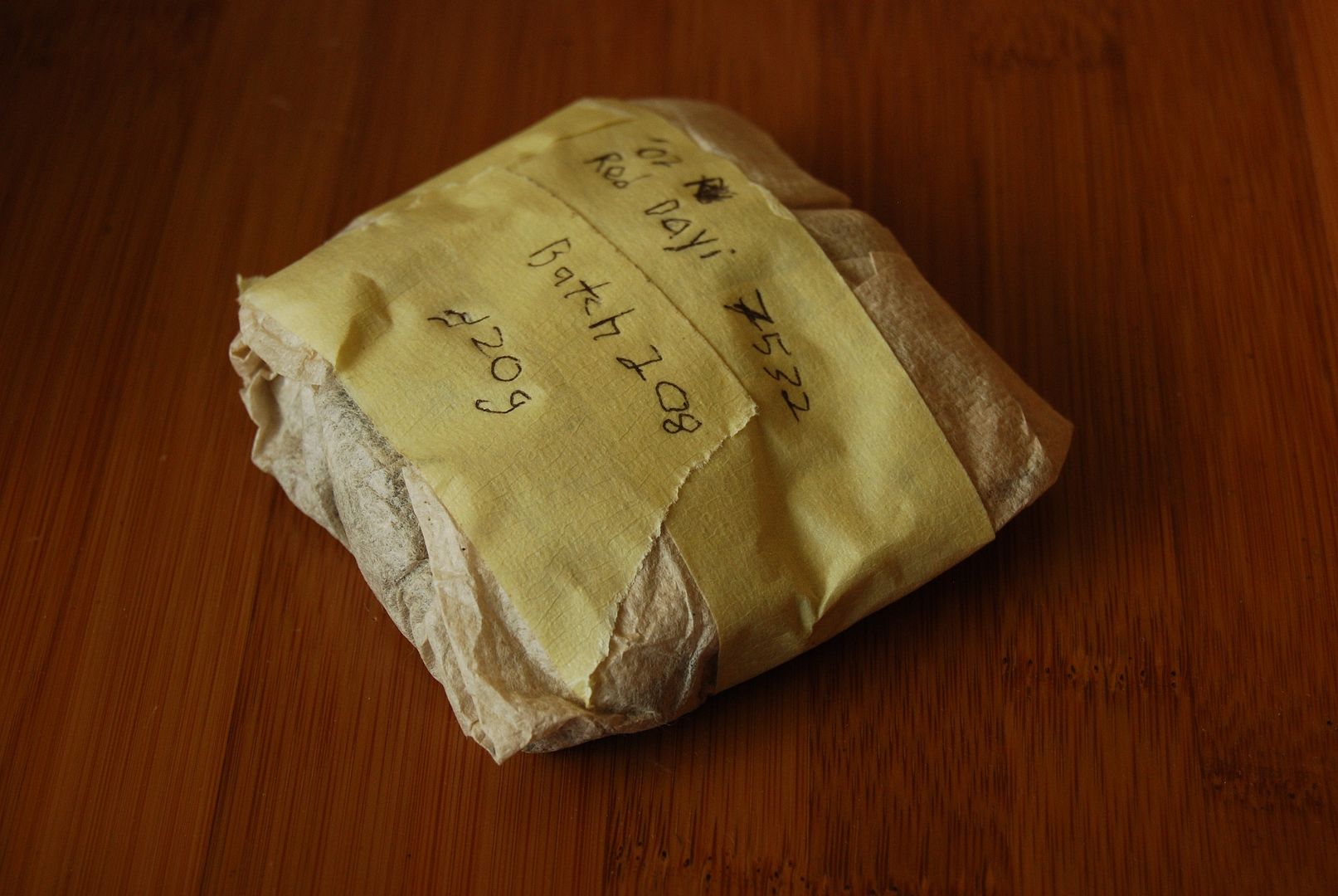
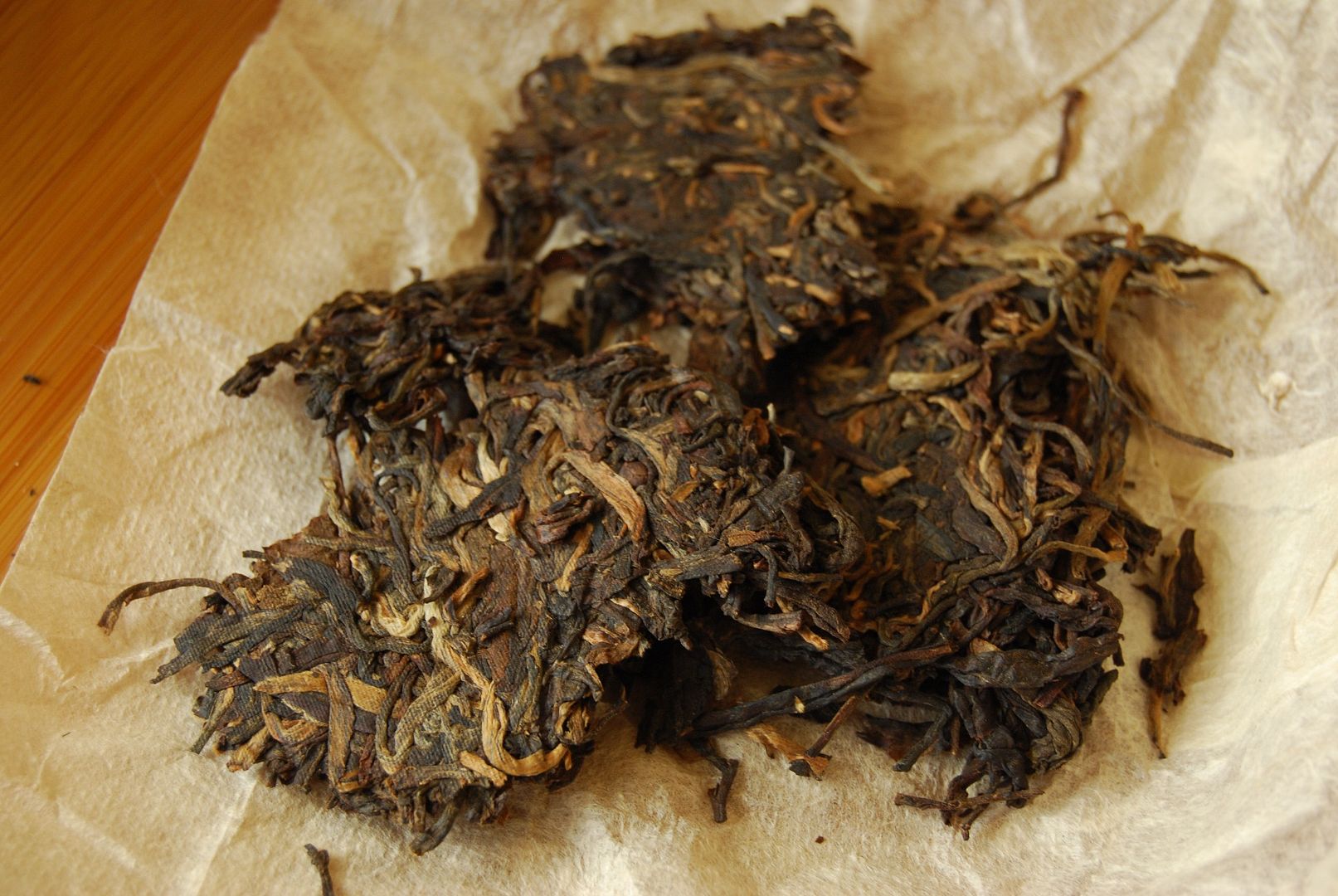


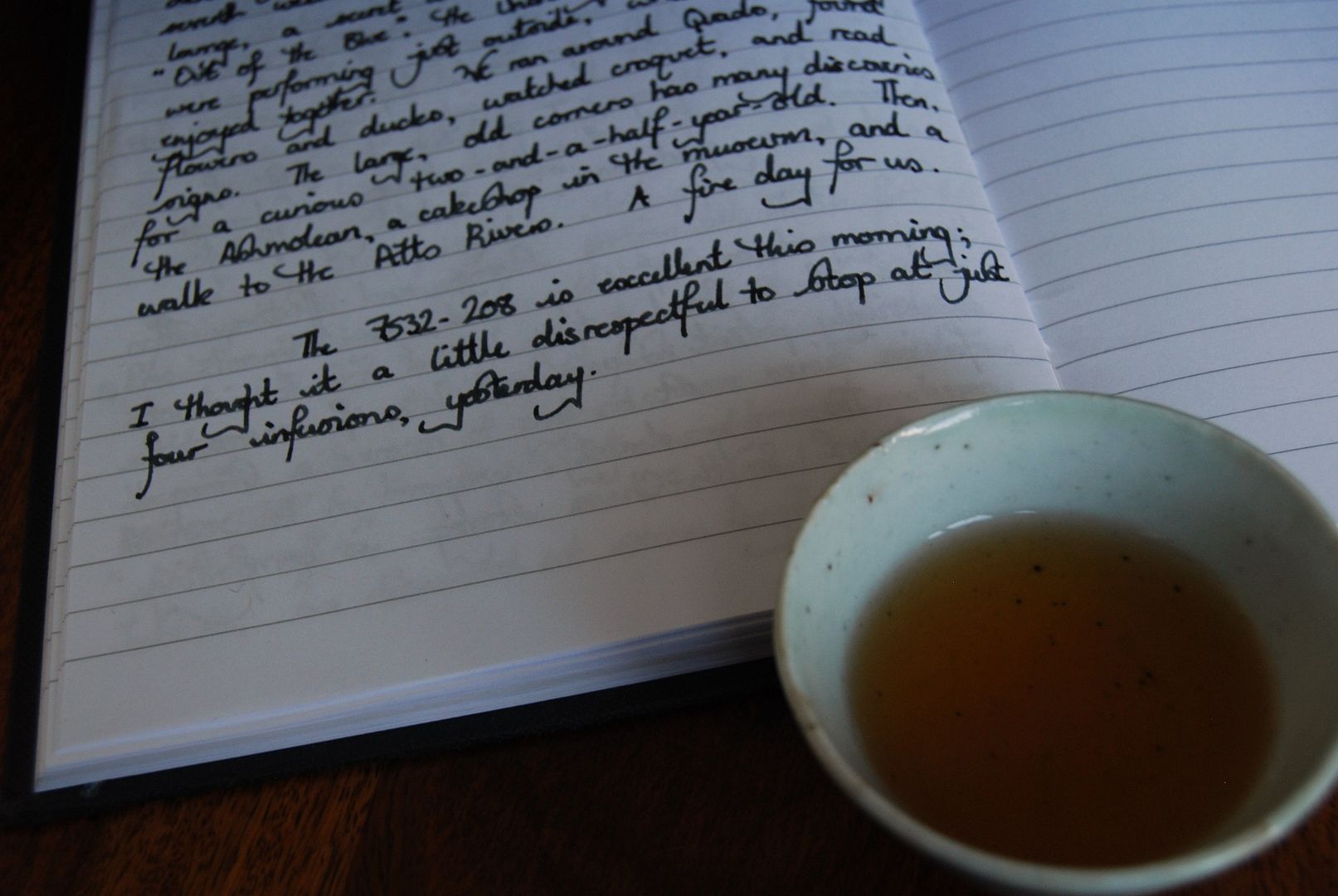
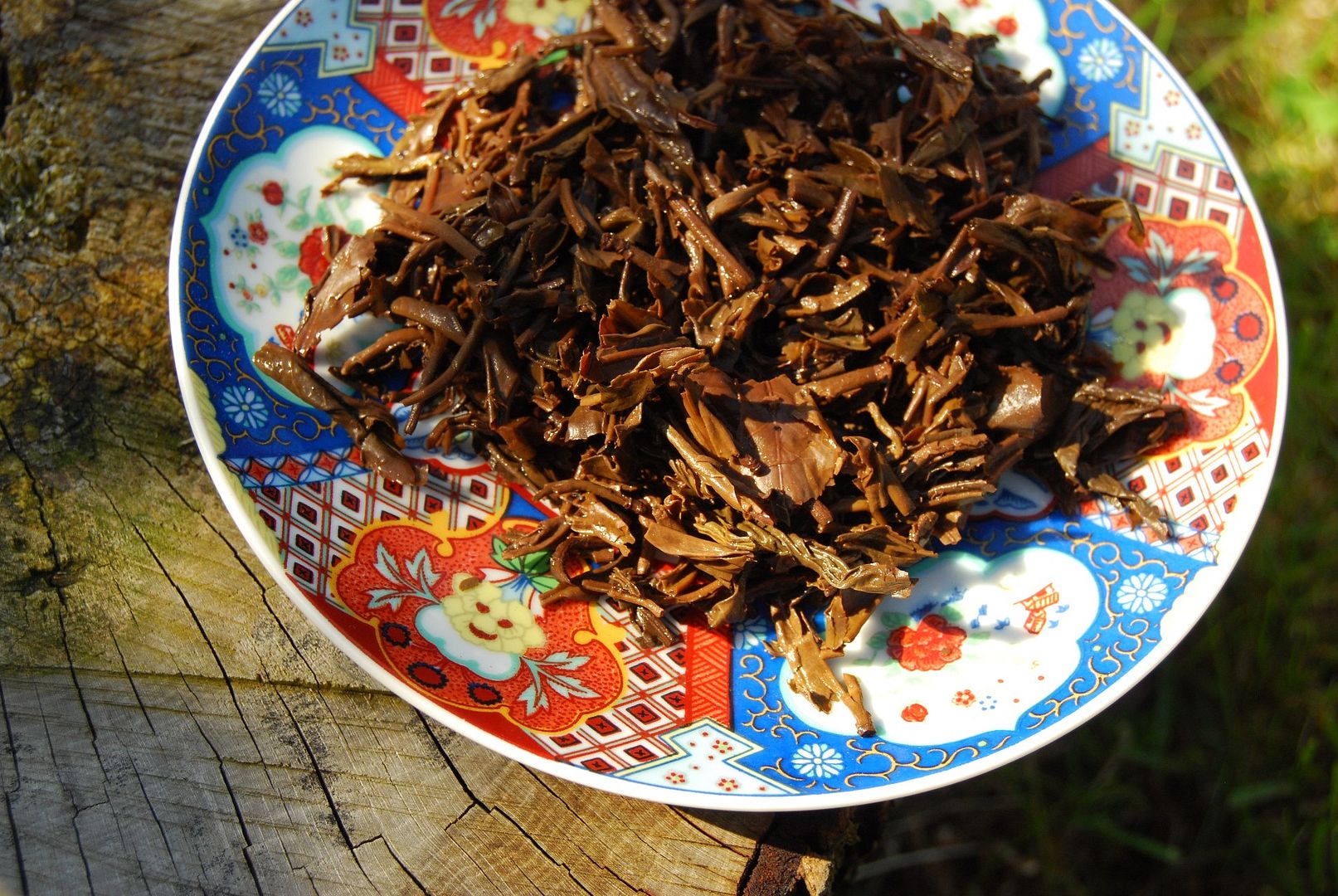
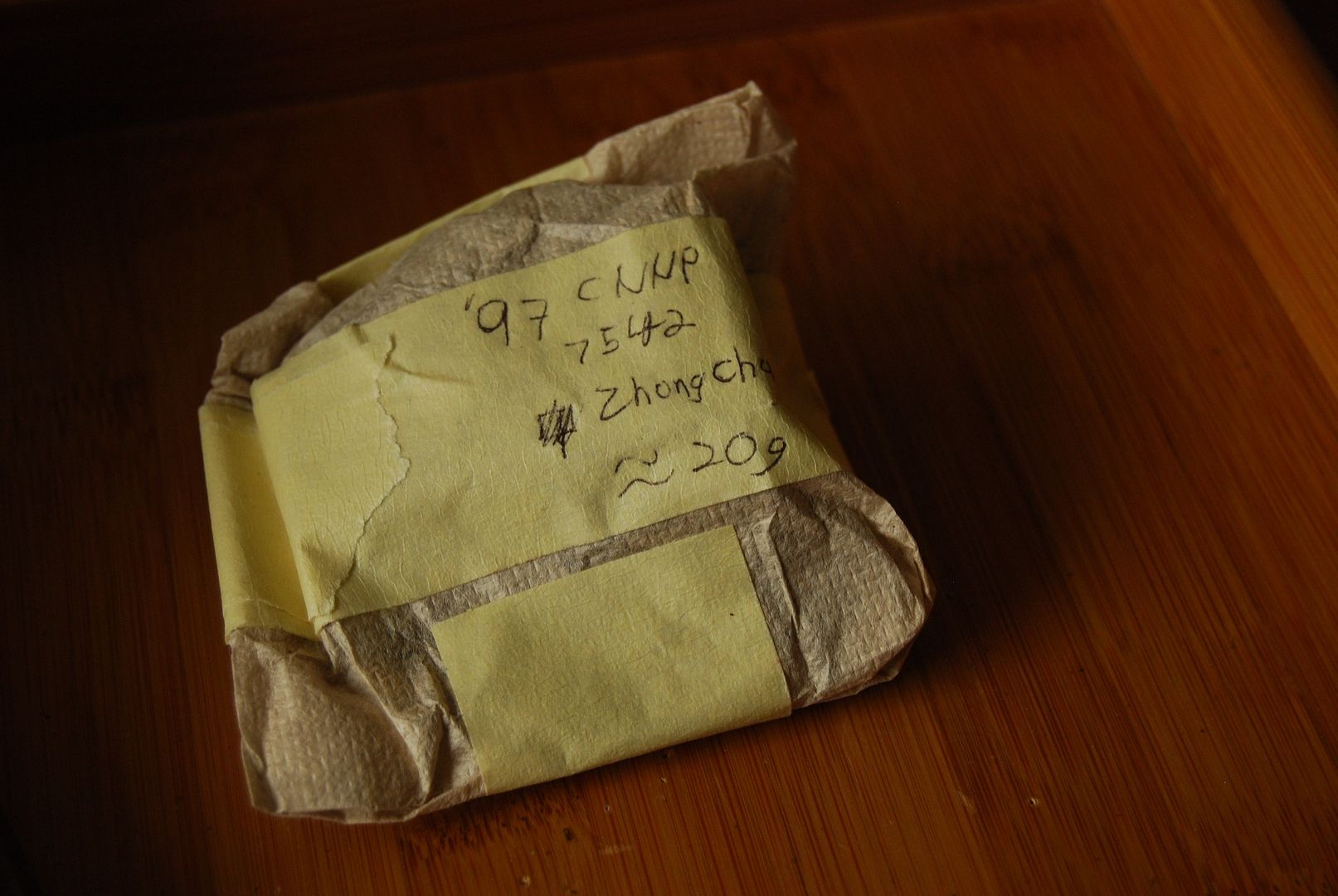
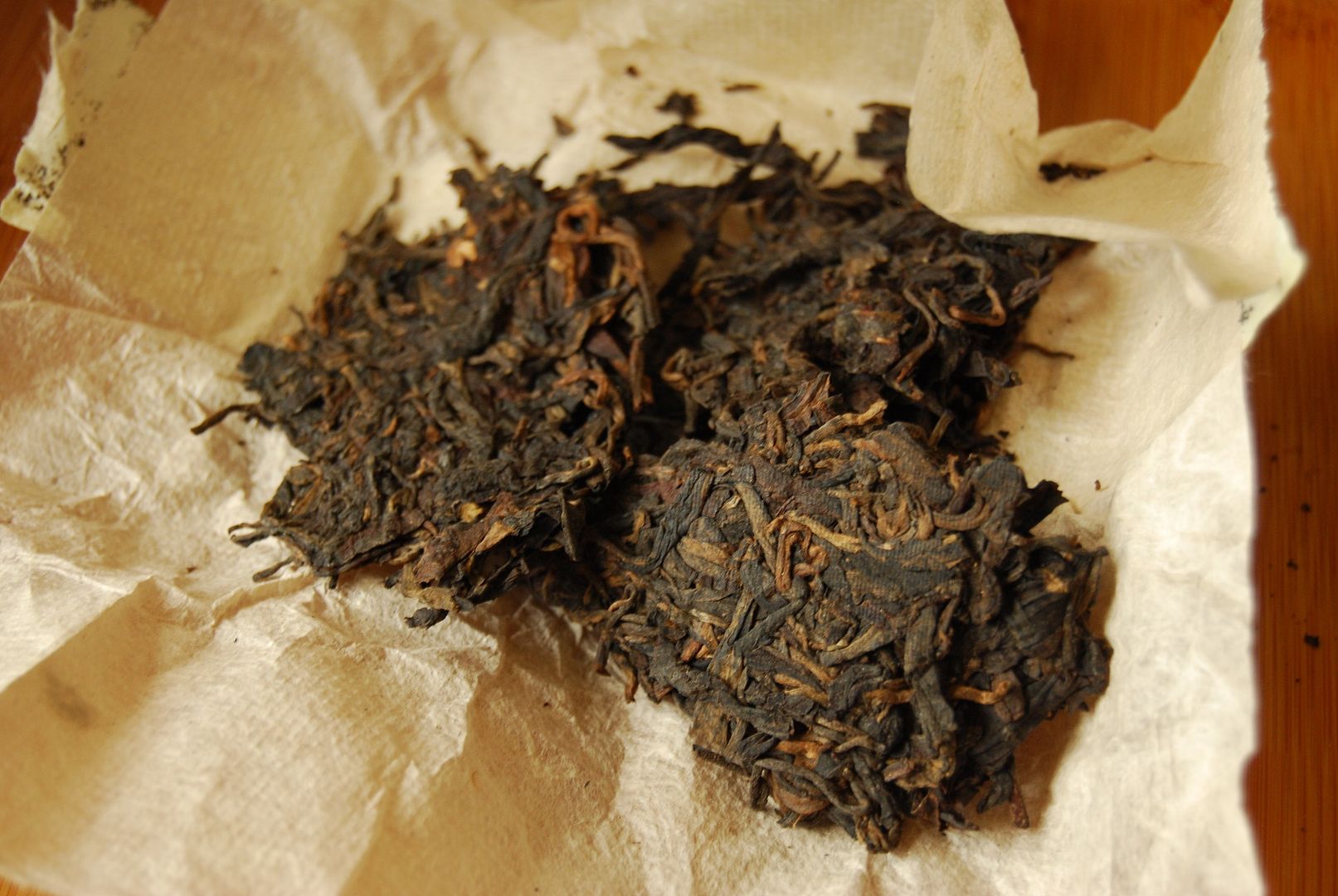
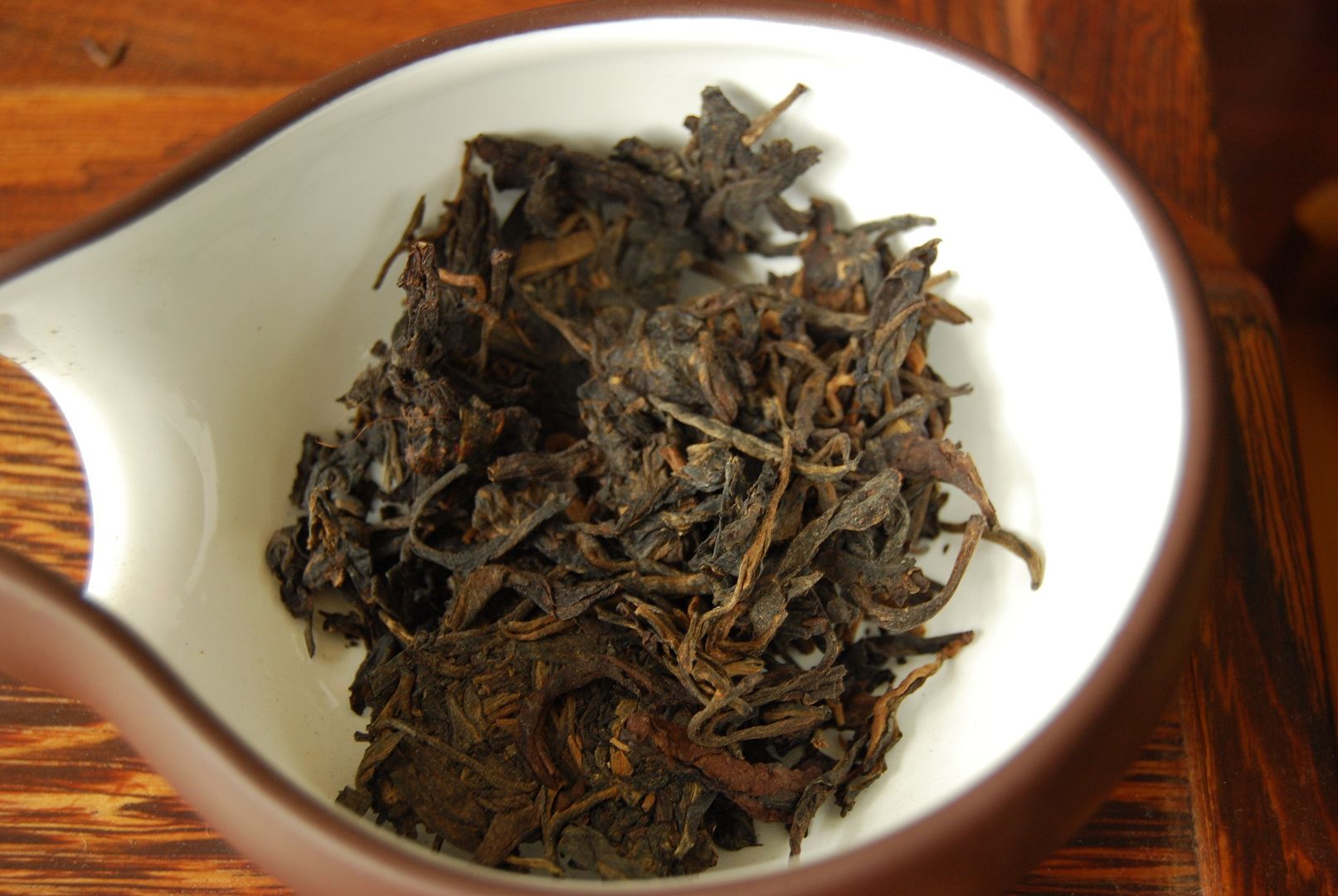
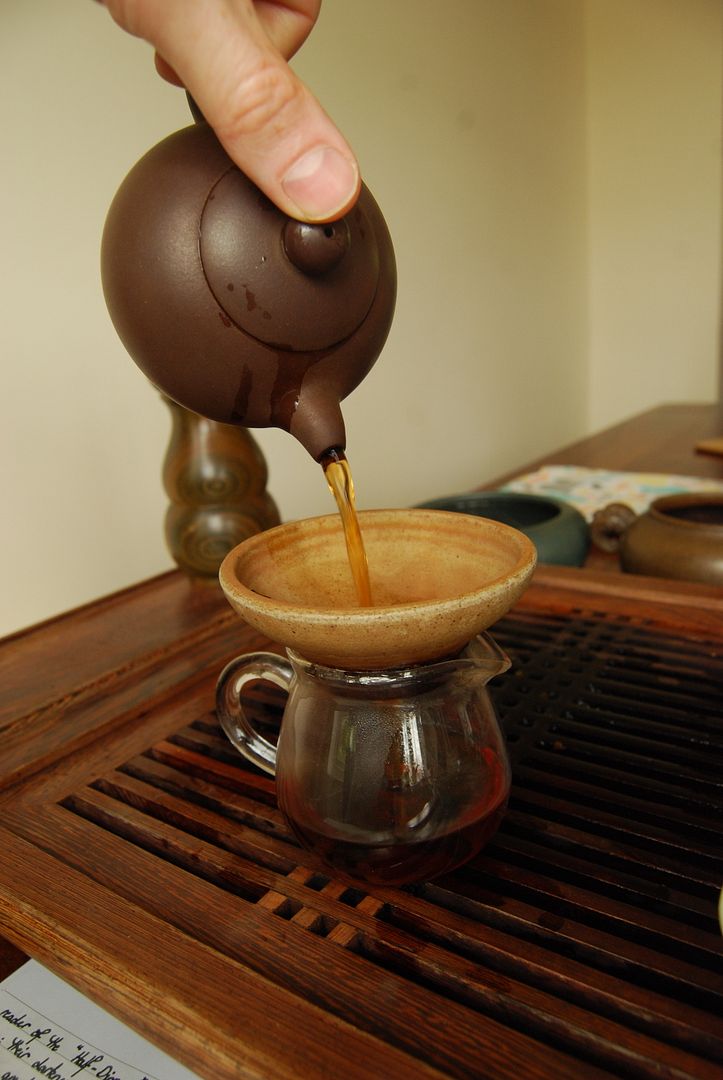
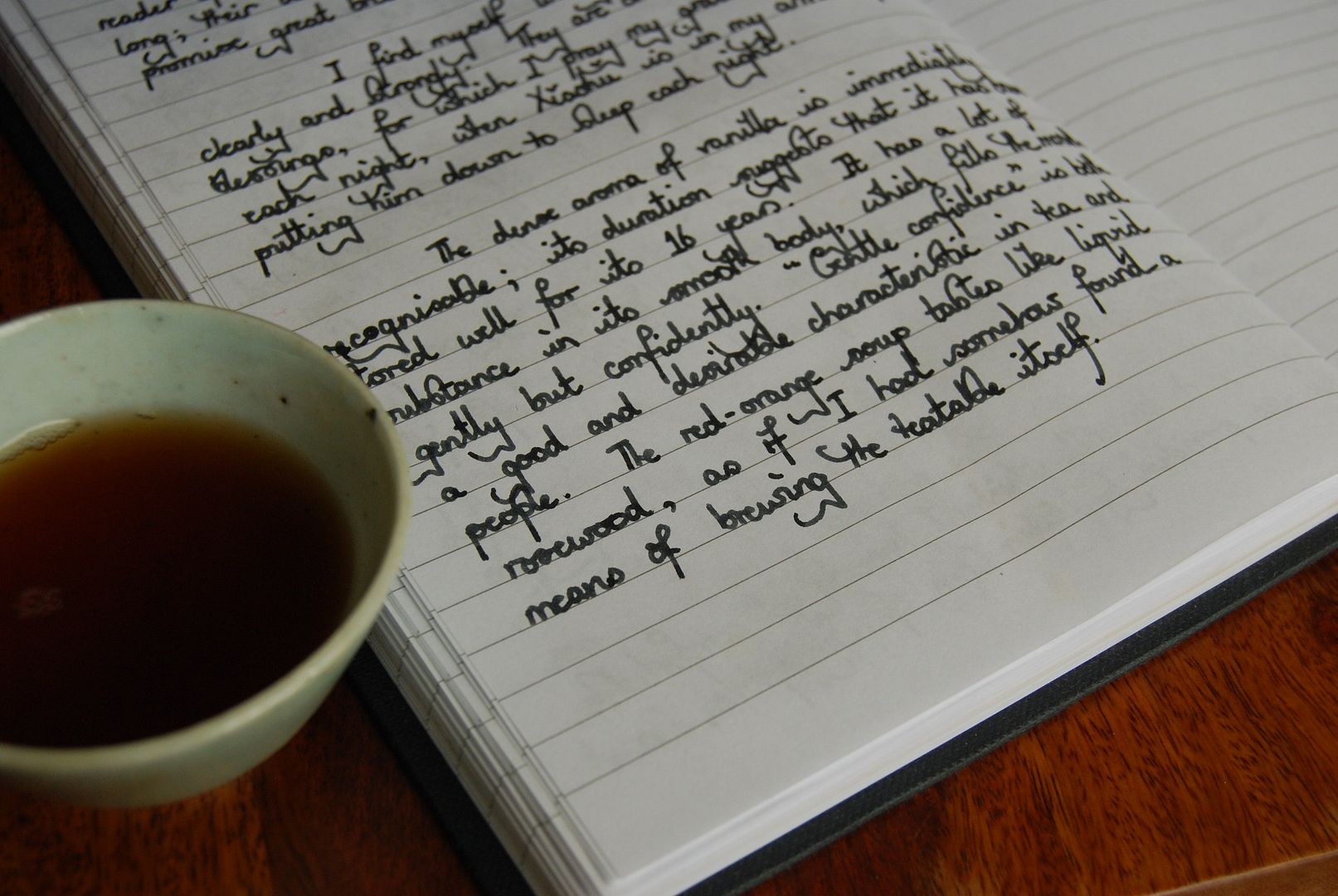
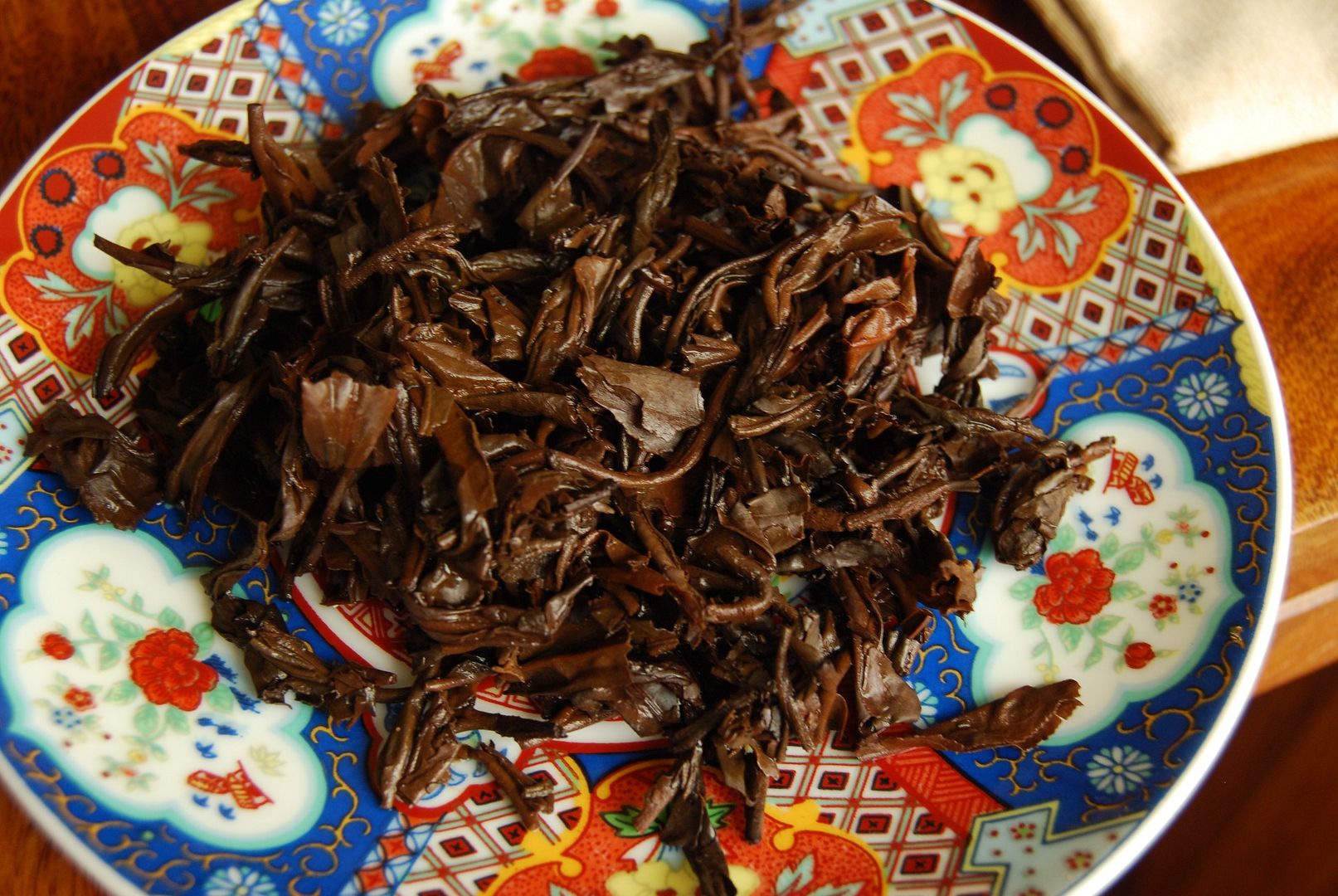
Ah, what race were you playing in 40k? (I was Eldar and Chaos).
ReplyDeleteSuch a lovely times that was, pity one does not have time anymore...
Best,
J.
You manage to invoke 40k (Imperial Guard 4 lyfe) and RZA.
ReplyDeleteI don't think I could love you more, Hobbes.
It's great to see my fellow 40k enthusiasts crawling out of the woodwork. :)
ReplyDeleteI always liked customising miniatures, and so playing the Orks satisfied my teenage destructive tendencies: you could buy a big pile of "snotling" bases, and then prune / remove them to adorn your latest customised military vehicle. I wish I'd taken photos of my customised Ork army (technically, that should be called a "Waaargh!") - I gave it to my cousin when he turned 13 so that he could continue the fight for me... :)
Toodlepip,
Hobbes
And I thought all we had in common was puer, but here I find out you have Bloodletters in your closet, along with a old sheet for level 8 bard. Keep on writing, Bobby Digital.
ReplyDeleteHobbes,
ReplyDeleteFabulous blog!
I'm rather new to drinking/aging/tasting Puerh and was wondering if you could recommend a simple protocol (as far as water temperature, steep times, amount of leaf) for young and aged sheng Puerhs?
Regards,
AZ
Dear Twodog,
ReplyDeleteI never owned any Khorne types - more of a Tzeentch man, myself. :)
My little brother, fittingly, collected Nurgle.
I think that says something about my personality.
Dear Josh,
Deceptively simple, devilishly difficult, questions!
Boiling water for both is ideal (with more details on water-boiling than you could ever need often recounted here and elsewhere!).
I tend to use around 10g of leaf for all kinds of shengpu, and brew in a "water-in, water-out" (i.e., no actual infusion time) manner. If the brew is too weak, you can lengthen the infusion time; if it is too strong for you, perhaps try fewer leaves. Some people report success with as little as 5g of leaf.
With older shengpu, you can pile in the leaves, because there isn't a bitterness penalty.
That should get you going - the key is experimentation according to your own tastes. :)
Toodlepip,
Hobbes